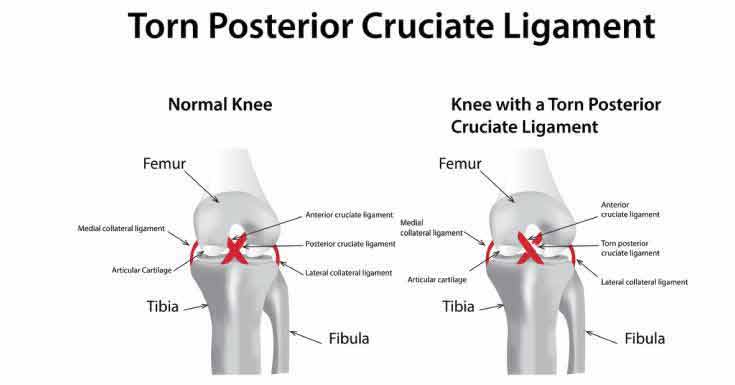The knee is one of the strongest and most important joints in the human body. Not only that, the knee is one of the largest and most complex joints at the same time. The knee connects the femur (thigh bone) and tibia (shin bone).
Other joints that make up the knee include patella (kneecap) and fibula (the smaller bone that runs alongside the tibia). The primary purpose of the knee is to allow the lower leg to move, which is why it is prone to injuries. Since it’s easy to sustain a knee injury it’s impossible not to wonder whether it can, indeed, lead to arthritis. Keep reading to find out more.
How frequent are Knee Injuries?
It’s easy to get injured, particularly if you’re an active individual who participates in some sports activity. Before we discuss knee injuries and their impact on arthritis risk, we’re going to take a look at a few interesting statistics[1].
Figures show that sports are the greatest cause of knee injury. In fact, more than 2.5 million knee injuries each year are caused by sports activities. About 80% of male knee injuries occurred in those aged between 5 and 44 while 65% of female knee injuries affected those aged between 15 and 64. Interestingly, 62% of all knee injuries affecting men were a result of sports activity while only 40% of female knee injuries were caused by sports.
Men 5-24 years old usually sustained knee injuries playing football and basketball while gentlemen aged between 25 and 44 injured their knee from stairs, steps, and landings. All women, regardless of the age group, injured their knee from stairs, landings, and steps.
What are the Causes of Knee Injuries?

In most cases, knee injuries are caused by an external force that twists or bends the knee in a way that it wasn’t anatomically designed for. Basically, an external force that pushes the joint out of its “comfort zone” can cause a knee injury.
The majority of knee injuries occur due to a twisting mechanism that occurs during accidents, sports, and falls. The twisted knee can lead to damage of cartilage and ligaments. Besides sports and accidents, knee injuries can be a result of wear and tear i.e. overuse of the joint.
What are the Types of Knee Injuries?
The human knee consists of numerous structures and any of them can get injured. As a result, there are many types of knee injuries[2], such as:
- Fractures – One of the most common knee injuries. The most frequently broken knee structure is the patella. Many fractures in the knee area are caused by high energy trauma like falls from great heights or car accidents
- Dislocation – This occurs when the bones of the knee are out of place either partially or completely. Abnormality in the knee structure falls, sports-related accidents, vehicle crashes can lead to dislocation
- Anterior cruciate ligament (ACL) injuries – Usually occur during sports activities such as football, basketball, and soccer. Basically, the ligament tears when a person changes direction rapidly or lands from a job improperly
- Posterior cruciate ligament (PCL) injuries – In this case, the ligament is injured from a blow to the front of the knee while the knee is bent
- Collateral ligament injuries – Caused by a force that pushes the knee sideways
- Meniscal tears – Occur when twisting, pivoting, cutting, or being tackled during sports activities. The injury can also be a result of aging process and arthritis
- Tendon tears – Prevalent among middle-aged people who play running or jumping sports

Knee Injuries and Arthritis – What is the Connection?
Arthritis is a term that refers to conditions indicated by joint pain, inflammation, swelling, and decreased flexibility. One of the most commonly arthritis-affected joints is knee so it is pretty obvious injuries play a role in the onset of this condition.
Bearing mind that knee injury is a risk factor for knee osteoarthritis (OA), the most common type of arthritis, but the magnitude of quantifiable risk was lacking, scientists from the University of Nottingham carried out an interesting study.
They searched numerous databases in order to find observational studies involving knee injuries and knee OA. Twenty four observational studies with a total of 20,997 participants met the criteria.
Results, published in the Osteoarthritis and Cartilage[3], found that history of knee injury is a significant risk factor for the development of knee OA. Due to the fact it is also one of a few modifiable risk factors, knee injuries should be a part of prevention programs in decreasing the risk of this type of arthritis, scientists concluded.
A study[4] from the Arthritis and Rheumatism revealed that nearly 1 in 4 patients with knee OA had a tear in ACL, but the problem is that less than half of the participants remembered ever having a knee injury.

The study involved 360 participants with knee OA and 73 people without knee pain. The MRI scan showed that 48 of those from the latter group had damaging signs of knee osteoarthritis.
Scientists also found that 23% of subjects with knee OA exhibited signs of complete ACL tear compared to only 2.7% of participants without knee pain. Interestingly, less than 1% of participants had a PCL injury.
Why do knee injuries act as a major cause of arthritis, you probably wonder. The acute joint damage that occurs[5] during injury launches a chain of reactions that can lead to progressive articular surface damage.
This sequence of events refers to the deterioration of the surface of the bone and the connecting tissues that stabilize and cushion the entire area. As you already know, that is what arthritis is all about. This could explain why people with a history of trauma to the knee are 3 to 6 times more likely to develop arthritis in the affected knee.
Read More: Bulletproof Celadrin Review – Is This Product Safe To Use?
Conclusion
Knee injuries are very common and we sustain them during sports activities, car accidents, falls, and other reasons. Evidence confirms that a history of knee injury increases the risk of arthritis in that knee.
We can conclude that knee injuries are a major arthritis risk factor, but it is modifiable and we can reduce the risk of arthritis by practicing caution when engaging in sports, keeping weight in a healthy range, and avoiding putting too much stress on our knees.
You can also check for similar effective joint relief supplements like Heal N Soothe and Arthrozene.
Feature Image: shutterstock.com
In-post Image: shutterstock.com







 This article changed my life!
This article changed my life! This article was informative.
This article was informative. I have a medical question.
I have a medical question.
 This article contains incorrect information.
This article contains incorrect information. This article doesn’t have the information I’m looking for.
This article doesn’t have the information I’m looking for.